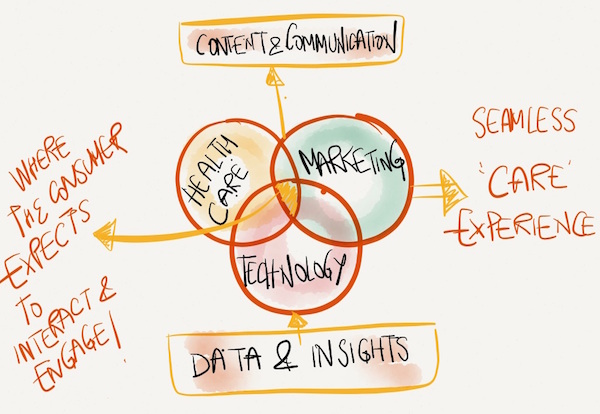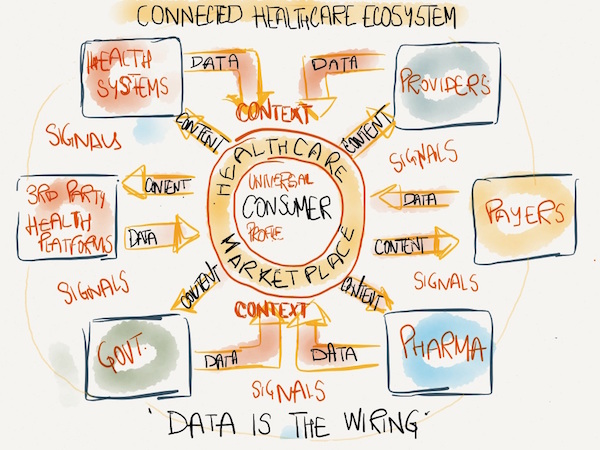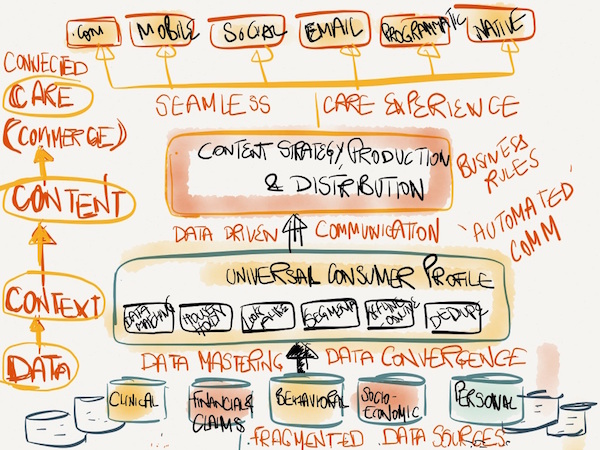
Why Marketing Automation Often Fails – Most Marketers Are Not Quantitative in Their Thinking!
August 9, 2016
Atlas Insights – Test Your Digital Marketing Knowledge
August 9, 2016I don’t know about you, but I’m about done with automated phone trees and being placed on hold. Under the heading “How tough could it be,” the digital revolution is about to transform health care. The following article Maynr Gupta explains why.
How marketing technology could transform healthcare
Posted: 06 Jan 2016 04:07 AM PST

The following is a guest post by Mayur Gupta, a pioneering chief marketing technologist and author of the Inspire Martech blog, who is now a senior vice president and head of digital at HealthGrades. Mayur is also on the board of advisors for the MarTech conference, and he will be one of our featured speakers at the San Francisco event, March 21-22. Check out the MarTech agenda and save $500 on registration before January 9.
We live in a digital world where, as a consumer, you now shop for fresh groceries on your phone and expect them to be delivered at your doorstep in less than four hours. You call for a luxury SUV or a taxi while you eat your last bite and expect your ride as you step out, without worrying if you have enough cash or a credit card in your pocket.
All this and more are part of our daily lives, thanks to the evolution and convergence of data, technology and consumer experiences. The last few years have witnessed exponential investment and growth at the intersection of marketing and technology, enabling experiences that successfully change consumer behavior and drive participation and engagement.
The world of marketing and storytelling is in a constant state of evolution as well: from multi-channel to channel agnostic and omni-channel thinking; from push and time-based campaigns to more always-on push & pull engagement; from pre-planned content to more automated and data-driven conversations. It is all happening in verticals like finance, retail, CPG, travel and hospitality.
But a key part of our lives that is still behind is the world of healthcare and healthcare services. A traditionally fragmented, slow, regulated and highly monopolized system that has been anything but consumer-focused. Most technology investments have been made to optimize the “health IT” systems to maximize the billing opportunities.
Even the most chronically ill patient spends only 1% of their lives in a hospital, but 80% of healthcare investment goes into the hospital infrastructure and not addressing the remaining 99% of the individual’s life. The focus has navigated around a “volume-driven” system: more interventions for more beds for more procedures for more people more often for more money.
But the future will not be the same
With the cost of care pushing towards the consumer, ever-narrowing networks and limited choices, and lack of transparency and communication, the consumer is finally pushing back. She now “owns her health” and is proactively looking for alternate solutions.
On top of that, the re-imbursement model has flipped on its head. The entire healthcare machinery will gradually be measured against outcome, the quality and success of a treatment leading to the positive health of an individual, instead of the sheer volume of treatment and utilization.
It’s a shift from volume to value, from sickness and treatment to health and wellness. The notion of “population health” has put the consumer at the center of a traditionally fragmented ecosystem, and consumer behavior is becoming the binding force. The health systems are now incentivized and rewarded based on how consumers behave in their daily lives, outside of hospital boundaries. And an urgent care hospitalization will represent an abject failure of the health management process, where the condition should have been predicted, prevented and managed higher up in the funnel.

As a consumer, this is ripe for positive disruption — a transformation she has gotten used to in other parts of her life. But as a health system, provider, pharma or payer, I now have to fundamentally evolve my thinking, operations, and execution.
• Always-on patient engagement
• Behavior-based inter-visit conversations
• Data-driven predictive models
• Universal understanding of the consumer
• Consumer insights and analytics
• Omni-channel content strategies
…and a lot more.
“CMO” has another meaning in healthcare beyond Chief Medical Officer now: Chief Marketing Officer
For the first time, this industry is now looking at marketing as a strategic capability to drive top-line growth, brand loyalty, and better health outcomes.
Most health systems are now hiring chief marketing officers, especially from other verticals like CPG, finance and retail, where Marketing transformation is already driving consumer acquisition, maximizing lifetime value and top-line growth. This is taking the scope of marketing from the big hoardings, direct mail and television spots, to data-driven always-on digital engagement that influences behavioral change.
Convergence of Marketing and Technology
To accomplish this vision of “healthcare in a digital world”, marketing and information technology cannot continue to operate in isolation. The healthcare technology evolution cannot be limited to the EMRs and EHRs of the world or the advancement of technology equipment within the hospitals, OTs, or clinical data management. It has to include 99% of the consumer’s life when she is not being treated inside a hospital.
80% of a consumer’s health is determined by non-medical factors — what she eats, where she lives, does she own or rent, does she drive or ride, how much she runs, is she married or single, her educational background, how much TV does she watch, what time does she sleep — even what she reads for that matter.
This is forcing health systems brands and marketers to be in an “always listening” and “always communicating” mode. This would not be possible without marketing technology — the convergence of marketing and technology, as we know it from the other verticals.

The consumer journey in healthcare is a never-ending cycle with infinite ZMOT-like moments. There is indeed no funnel. The consumer could jump from being a completely passive and healthy individual to a patient looking for the best doctor, and the best hospital, in a flash. And on the flip side, she could be in a state of awareness and proactive health management for a very long time before an encounter.
Communication will be the next big intervention in healthcare
The “Right Content to the Right Person at the Right Time” cliché could not be applied in a more appropriate place than in healthcare. It will require a holistic communication strategy that may include personalized content around lifestyle, administrative, and healthcare needs. But none of this is possible without the adoption of a connected marketing technology and data ecosystem, the underlying machinery to deliver seamless omni-channel care experiences.
Capabilities such as:
• Marketing Automation for Always-On Data-Driven Communication — Driving behavioral change and participation through rule-based, data-driven communication that could be anything from a reminder to book the next appointment or take a medicine or lifestyle content about the right food for that individual.
• Web Experience Management Platforms for Personalized Relevant Healthcare Experiences — From generic pieces of content and mass communication to more personalized, relevant, and contextual experiences on a hospital.com site or any other third party platform.
• CRM and Lifetime Value Management with Always-On Care — Establishing an always-on system of engagement that focuses on understanding consumer behavior and insights and leverages content across all channels to inspire behavioral change through participation. It also includes continuous listening to the consumer, both passive and active listening, to get her the care and information she needs even before she knows she needs it.
• Predictive Models for Various Health Conditions — Leveraging big data across clinical, claims, financial, socio-economic, household, behavioral, personal and other areas to build predictive models that may signify an individual’s propensity against specific health conditions and using that insight to influence communication with that individual.
• Data Management Platforms (DMPs) for Managing an Individual’s Universal Health Profile — None of this would be possible without a universal 360-degree view of the consumer across the offline and online world, across her clinical and non-clinical life. While the data has always existed, it has never been harmonized and connected. The DMPs not only provide this universal view along with consumer insights but can also feed that insight into various communication channels (pull & push) based on business rules, enabling the most seamless and connected healthcare experience.
• Other Capabilities – Programmatic Buying, Social Monitoring and Consumer Engagement, Agile Mindset and Methodology — Everything that has been built to deliver immersive consumer experiences will now be applied in the world of healthcare, because the same consumer expects the same level of relevance, value, and storytelling in how they consumer healthcare services.
The human-centered technology ecosystem
Like any other vertical, the biggest opportunity lies in connecting these isolated pieces of “marketing and advertising technology” with the traditional healthcare IT systems to form the most connected technology ecosystem that puts the human at the center. This is where I believe the traditional definition and focus on healthcare IT is no longer enough.
That world has to converge with the world of marketing, advertising, and storytelling to deliver healthcare experiences that matter and to drive participation and behavioral change.
The “no baggage” healthcare industry will move fast
There is no doubt that healthcare is far behind in terms of digital adoption as compared to the other verticals. But healthcare has no historical marketing baggage. This offers healthcare brands and marketers an opportunity to adopt new capabilities and technologies with greater speed and agility, to deliver care experiences that are more connected, seamless, and immersive.
It’s no surprise that most leading health systems are already talking about “omni-channel experiences” and not just a “multi-channel” existence — a notion that took many years for all other verticals to understand and comprehend, let alone execute.
I am sure many will question the gap between today’s reality and tomorrow’s dream in healthcare. There are obvious questions around the broken ecosystem, conflicting business model with, let’s say, tele-health, lack of digital adoption, regulations, HIPAA compliance, and much more.
But the consumer is now at the helm. She is calling the shots, asking questions, and exercising choice. Healthcare brand builders have no option but to focus on consumer experiences as much as clinical output. And if they want to maximize the lifetime value of this consumer, brands will need to become data-driven and operate at the intersection of marketing, communication, technology, and healthcare.


